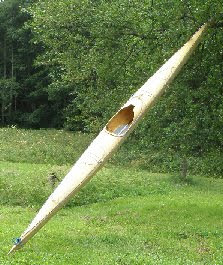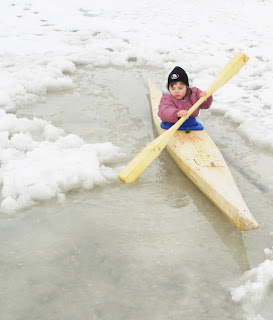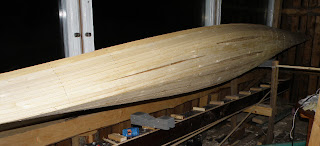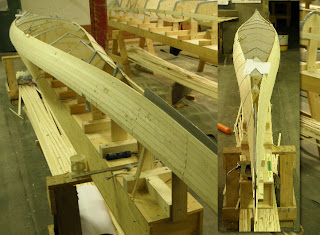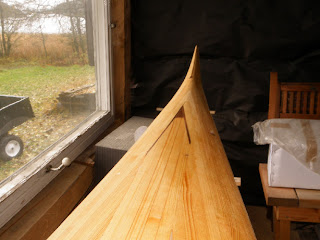We had a warm and beatiful day today. T-shirt and factor 25+ weather. Two couples went kayaking, and myself went doing some rolling and remounting excercise in the Finnish midsummer dawn.
One couple went for a slightly longer daytour. The husband of the woman had previous kayaking experience and desired to share the experience with his partner. They both joined my kayaking class the previous day and quickly became comfortable in paddling and manouvering their kayaks. Today they picked the faster single kayaks from yesterdays class. It was another success of enjoying nature and getting even more comfortable with kayaking.
Another couple went on a first time paddle for a couple of hours. They were equipped with a stable tandem kayak. Should not say it is impossible to capsize it - but almost. This couple was inspired by a paddler passing by under the Snäcksund bridge to Ramsholmen. Again happy faces. We will do it again.
I used the evening to finetune my selfrescues. Rolling right and left. Sculling up and sweeping. With force and speed, and with slow smooth motion. I did find a couple of positions where the lift of the paddle and something in the "hip" movement did not match perfectly and I failed to do an unforced roll. After a failed roll, sculling up did not seem to work as an immediate backup. Had to go back down and start from the beginning. This will be my homework for the next training session: To fail a roll and then on halfway up, with a sinking paddle, switching to a sculling brace, from where rising up should be safe and easy.
Re-entry and roll with a closed spraydeck succeeded first time for me. There was a little bit of nervousness when being underneeth. An anxiety was closing in on me while I let the paddle go to fix the spraydeck using both hands. I had to "trackback" in my head and convince myself that a) I do still have oxygen in my blood and lungs for many more heartbeats, b) It is also possible to go and sip for air without rolling if I fail. c) calm down - close the spraydeck as you normally do above water - grap the paddle - roll up. Easy! And yes!! I was up with spraydeck closed!
Some improvement is still needed on the re-entry-spraydeck-roll. One disappointment with my performance was that the cockpit flooded with as much water as when doing the re-entry-roll with spraydeck open. Some more confidence and finetuning should improve those scores too.
Mounting the Valley Nordkapp by "jumping" up from the water to initially lie across the cockpit seems to be quickest. I also have less water to pump out. At the moment cross-mounting is much better than re-entry and roll measured by liters of water.
All while doing the training manouvers I could hear cheering and applaudes. "He tipped again!!" And after awhile - applaudes! A group of boys had much fun around their illegal campfire on the shore.
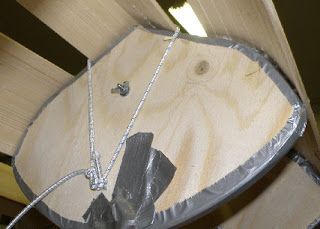 challenge. The sharp bow and stern bottom in combination with the flattish middle section requires a twist of the strips along the keelsection. At the same time sidestrips need to be bent sideways to carry down a the curvature of the shear down towards the keel.
challenge. The sharp bow and stern bottom in combination with the flattish middle section requires a twist of the strips along the keelsection. At the same time sidestrips need to be bent sideways to carry down a the curvature of the shear down towards the keel.  the form. Perhaps the problem would not have been there with stapled strips? Alternatively the strips could have been layed out differently? I do have a plan however - the keel section is still not fixed to the bow, so I can extend it forwards and push it back down and out. What may be interesting is to see the technique to keep strips aligned without staples, and to have them pressed together. All the complex forces cannot be fixed at this stage by stapling. The forces would only lift the staples up and out as they did in my attempt to fix the hoovering keelsection.
the form. Perhaps the problem would not have been there with stapled strips? Alternatively the strips could have been layed out differently? I do have a plan however - the keel section is still not fixed to the bow, so I can extend it forwards and push it back down and out. What may be interesting is to see the technique to keep strips aligned without staples, and to have them pressed together. All the complex forces cannot be fixed at this stage by stapling. The forces would only lift the staples up and out as they did in my attempt to fix the hoovering keelsection.